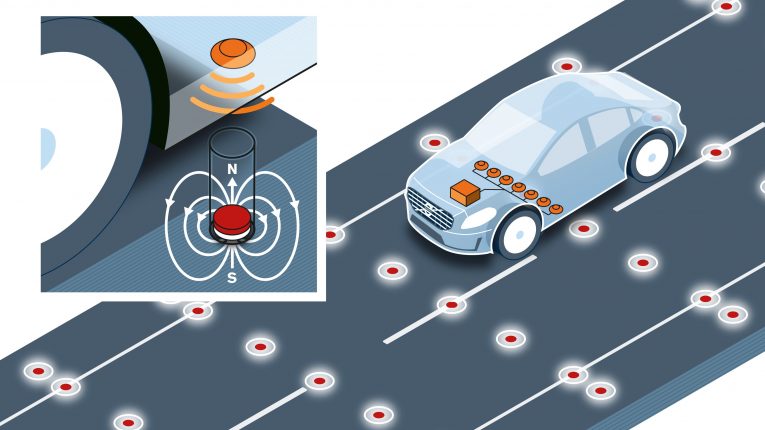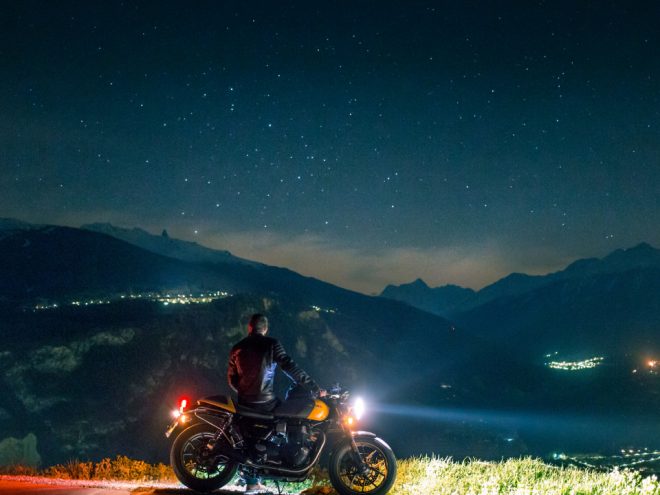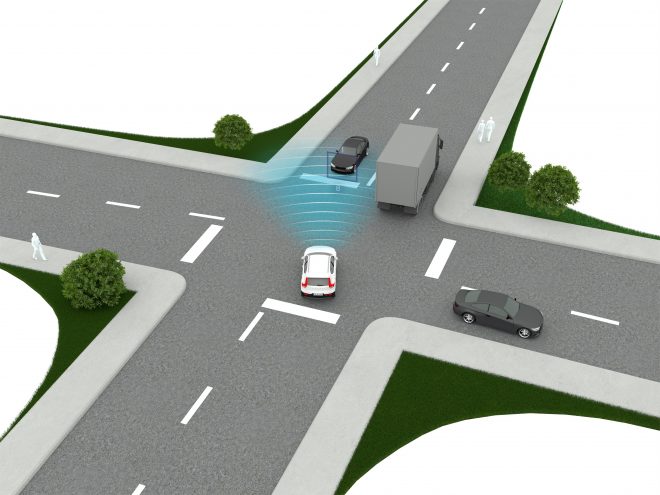
Volvo Tests Road Magnets for Self-Driving Cars
Volvo has completed a research project using magnets in the roadway to help the car determine its position. The research, which has been financed in strategic co-operation with the Swedish Transport Administration (Trafikverket), is a potential key to the implementation of self-driving vehicles.
Reliable and highly accurate positioning is one of the crucial issues in the development of self-driving cars.
While established positioning technologies such as GPS and cameras have limitations in certain conditions, road-integrated magnets remain unaffected by physical obstacles and poor weather conditions.
“The magnets create an invisible ‘railway’ that literally paves the way for a positioning inaccuracy of less than one decimetre. We have tested the technology at a variety of speeds and the results so far are promising,” says Jonas Ekmark, Preventive Safety Leader at Volvo Car Group.
Volvo plays a leading role in a large-scale autonomous driving pilot project in which 100 self-driving Volvo cars will use public roads in everyday driving conditions around the Swedish city of Gothenburg.
Helps prevent run-off road accidents
In parallel with the potential in the field of autonomous driving, road-integrated magnets open up a number of other possibilities:
- Incorporating magnet-based positioning in preventive safety systems could help prevent run-off road accidents.
- Magnets could facilitate accuracy of winter road maintenance, which in turn could prevent damage to snow-covered objects, such as barriers and signs, near the road edge.
- There is also a possibility of more efficient utilisation of road space since accurate positioning could allow lanes to be narrower.
Accurate, reliable and cost-effective
Volvo’s research team created a 100-meter long test track at the company’s testing facilities in Hällered outside Gothenburg, Sweden. A pattern of round ferrite magnets (40×15 mm) was located 200 mm below the road surface. The car was equipped with several magnetic field sensors.
The research program was designed to evaluate crucial issues, such as detection range, reliability, durability, cost and the impact on road maintenance.
“Our experience so far is that ferrite magnets are an efficient, reliable and relatively cheap solution, both when it comes to the infrastructure and on-board sensor technology. The next step is to conduct tests in real-life traffic,” explains Jonas Ekmark.
Claes Tingvall, Traffic Safety Director at the Swedish Transport Administration, agrees: “The test results are very interesting, especially when adding the potential for improved safety as well the advantages for the development of self-driving vehicles. A large-scale implementation of road magnets could very well be part of Sweden’s aim to pioneer technology that contributes to sustainable mobility,” says Claes Tingvall.









